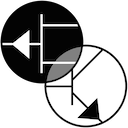- February 18, 2013
- Joe
- knowledge
- 1 Comment
 Some time ago I shared my thoughts on designing and deploying an app that would work under the offline concept (no connection to the internet necessary) or online one (connection to the internet necessary).
Some time ago I shared my thoughts on designing and deploying an app that would work under the offline concept (no connection to the internet necessary) or online one (connection to the internet necessary).
Well, during my visit to Innsbruck the experience reassured me to follow the online route. In short, online is easier on the user side, far easier. Why? GPS locking takes time. Enough time to discourage a user to use the app at all.
Lets elaborate
The Innsbruck app works offline and well as online. Again, working off line required the user to download the data to their phone devices. Interestingly enough, this app also offers AR. However to use this feature offline its necessary to have a GPS locking.
GPS locking?
You see, for a GPS to know where it is, it needs the stable signal strength of at least three satellites, for a certain amount of time (generally more than a minute, and I’m being generous, normally it takes far more time than that). Once these conditions are met, then the GPS can project where it is located in this small planet.
However, capturing the signal of the several GPS satellite will depend on:
- Receiver. A GPS for car is rather big (compared to today’s standards), which allows it to have a very good antenna and because power consumption is no issue (power is supplied by the car), it can also have a very good signal amplifier. These two advantages enable a car GPS to know its position rather quickly.
- Where the GPS receiver is (a.k.a person). The best way to have signal from the sky for the -at least- three GPS satellites is to have nothing around you. Any object bigger than the person will weaken the GPS signal, thus buildings, tree and bigger objects will makes things more difficult for the GPS recevier.
Now, take condition #1 and miniaturize the antenna to fit on a mobile phone -while you’re at it-, reduce signal amplification, in order to have more battery life for -you know-, make calls. And then … put the person in the middle of a city (surrounded by buildings), you’ll have a really though environment to get a fast GPS locking.
Hence bring us to the initial point, in order to use the Innsbruck app offline, the person needed to activate the GPS and then wait for it to lock. This process could take several minutes having the phone outside looking to the sky. A geek like me can do -and wait- for that to happen, a normal user wouldn’t even know when to start/stop giving up the whole thing. Notice: this is no a critic to the app itself, I quite understand why they did it this way, I’m just explaining how the whole thing works.
Enter location companies
Because of the previous complicated process, companies like Skyhook exist. What do they do?
Skyhook roams with their cars around the world capturing cellular network information like: cell site number and its location. The also do it with Wifi. Google also does something similar with their Google car for Street View.
So companies like Skyhook then sell their data to different companies like Apple. Remember the first iPhone up until the 3G, didn’t include GPS chip. By using Skyhook services, the iPhone could know where is was without a GPS, Skyhook provided this data just by knowing the cell site around the device. As you might infer, this procedure involved having a network connection (online), so it was mandatory for the iPhone to have network connection in order to know where it was.
Layar also uses Skyhook, I suppose Junaio also does, among many others. By using these type of services, AR browsers are not limited to depend on the GPS to know where the devices is. If the GPS is active, great, it will give the app more precision, but if not, there’s a service to default to.
Needles to say, Google Maps also does this, but using its internal engine, no need for Skyhook.
As you can see, the decision to go online vs offline might be economical and/or practical. What’s sure is that online is far easier on the user than offline, even though the latter is more precise.
